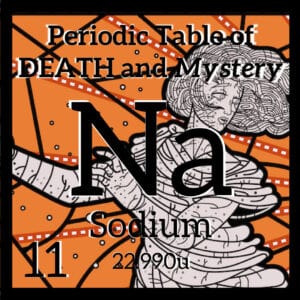We use idioms in language all the time. “Don’t cut corners is a good rule of thumb.” “You missed the boat on that one and it’s the last straw.” “She’s normally fit as a fiddle, but under the weather today” (1). Idioms are expressions that have a completely different meaning than the literal words because how weird would it be for it to be “raining cats and dogs”? But most idioms used today have historical origins (2). If you “make the grade”, it means you’ve succeeded. But originally it had to do with whether a train locomotive could pull its cars up a steep slope. Did you ever “burn the midnight oil” by working late into the night? This idiom was coined in the 1600s by poet Francis Quarles when oil burning lamps were used to light up the night.
“We spend our mid-day sweat, our mid-night oil,
We tire the night in thought; the day in toil.”
These idioms are all English-language based, but every culture has them. Let’s pluck one that possibly originated in Russia because it will lead us to our periodic table element, sodium, and our topic for today: salt mines. “Back to the salt mine,” or “See you in the salt mines” is an ironic idiom that equates salt mines with someone’s mind-numbing job or tedious place of work (3). Irony aside, this specific idiom has a dark history because salt mines have a pretty dark history. Historically, mining salt—Sodium Chloride—was ridiculously dangerous such that many kingdoms, cultures, countries used slavery or forced labor which is what Russia did in the 1800s with prisoners shipped to Siberia.
But why was salt so valuable that humanity basically sacrificed people to mine it? Welp, salt makes food taste better, so it was sold or bartered as a seasoning. In fact, salt was once (and still is) used as currency. For example, Roman Legionnaires were once paid in salt or a salarium. Where do you think the word salary came from (4)? Before refrigeration, salt was (and still is) used as a natural preservative. And salt, or the sodium and chloride ions that make up salt, are also absolutely essential to life. Yes, the same salt your doctor tells you to cut back on in your diet because too much salt can cause an increased risk of high blood pressure which in turn is linked to stroke, heart disease, and death. What is too much salt? The World Health Organization says > 5 grams/day(!), which is A LOT of salt (5).
But what the WHO is actually measuring with salt intake is sodium intake. Five grams of table salt is the equivalent of 2 grams of the element, sodium, the first element in the 3rd period of the periodic table with an atomic number of 11. It’s the sixth most abundant element on Earth making up about 2.6 % of the Earth’s crust (6). And while all the lighter elements that come before sodium on the periodic table have fairly obvious symbols—H is Hydrogen, Li is Lithium, O is Oxygen, etc.—sodium’s symbol is Na for Natron which comes from the Ancient Egyptian word ntrj. Natron is a sodium containing compound incredibly important in mummification and originally mined in the Natron valley of Egypt. It even has its own hieroglyph.
Around the world and in the U.S., a lot of salt mines are deep underground and made up of solid halite (7), which is rock salt. The salt deposits came about because of ancient salty inland seas that evaporated and were buried. Because of the geological pressure around these deposits and because these salt deposits are very plastic, parts of the salt beds would rise sometimes thousands of feet through the surrounding sediment and create HUGE pillars of salt (apologies to Lot’s wife) or salt domes that were more accessible to salt mining (8). Not only that, but the deformation of the sediments around the salt domes can trap and hold natural gas and oil. And it was one exploratory oil drilling disaster around a salt mine in southern Louisiana that will round out the mystery portion of this article/podcast.
Lake Peigneur in southern Louisiana, U.S.A. was a wide but shallow recreational lake that collected water from the surrounding countryside and channeled that water into the Gulf of Mexico through a narrow canal. The abundance of rain in the region fed lush greenery and a gorgeous botanical gardens situated on Jefferson Island in the lake. The gardens shared its land with a salt mining company that had been mining since 1919 because underneath the lake were ancient salt deposits with a salt dome and possibly, oil. That day in November 1980, Texaco crews working from a derrick and barge on the lake’s surface, dropped an exploratory drill through the lakebed. But at about 1300 feet down, the drill bit got stuck which didn’t make sense. Surely the engineers had mathematically given them the correct coordinates based on precise calculations—
Uh-oh.
Loud popping noises rose through the shaft, then the barge tilted drastically in the water. They’d drilled into the salt dome and hit a vertical shaft. Wisely abandoning the derrick barge, the crew watched in amazement from shore as the water started to drain into the mine creating a whirling vortez that got larger and faster as the salt around the drilling hole dissolved. The whirlpool literally sucked the derrick and barge and something like 11 total barges underwater. Not only that, but the draining water caused the canal to the Gulf to drain backwards into the lake for hours, changing the water from fresh to brackish. But the kicker here was that there were 55 salt miners underground in the rapidly flooding and dissolving shafts. Luckily, they all got out safely (9).
So obviously the oil crew was drilling in the wrong place. Why? That’s the mystery. It was thought that one of those numbers used to triangulate the drilling site was incorrect, and the crew had drilled 400 feet from the actual site. But the theory was never confirmed because all of the engineering paperwork was sucked down with the barges. Convenient. I bet some pretty “salty language” was tossed about during the investigation. And when Texaco had to write a few multi-million dollar checks for damages incurred, “heads probably rolled.”
- https://www.ef.com/wwen/english-resources/english-idioms/
- https://www.thehenryford.org/explore/blog/exploring-the-origins-of-idioms/
- https://en.wikipedia.org/wiki/Salt_mining
- https://seasalt.com/salt-101/about-salt/history-of-salt#
- https://www.paho.org/en/enlace/salt-intake#
- https://www.rsc.org/periodic-table/element/11/sodium
- https://en.wikipedia.org/wiki/Halite
- https://geology.com/stories/13/salt-domes/#
- https://www.youtube.com/watch?v=p_iZr2-Coqc
- https://www.reddit.com/r/submechanophobia/comments/bc8qyp/diagram_of_the_lake_peigneur_disaster_check_out/



 Neon, Red-Light Districts, and the Periodic Table of Death and Mystery
Neon, Red-Light Districts, and the Periodic Table of Death and Mystery
Leave a Reply